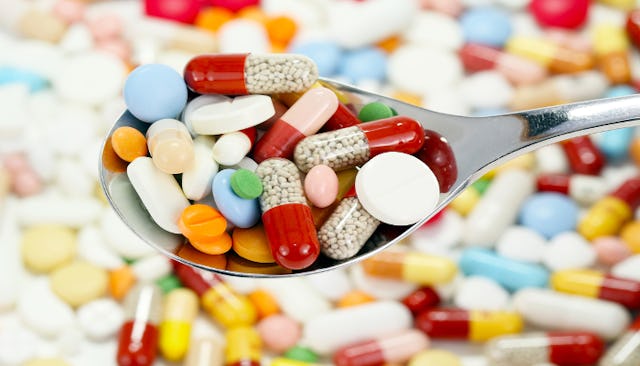Accidental Overdose Still Sends 59,000 Kids A Year To The ER

59,000 children go to the ER each year as a result of accidental overdose in their own homes.
With dish detergent under the sink, laundry pods by the washer, vitamins and over-the-counter drugs in the cupboard, and prescriptions in the medicine cabinet – you’ve got a lot of potentially poisonous, accessible edibles in your home. How safely are you stashing yours?
ABC News reports that accidental overdose sends approximately 160 kids to the emergency room every day in the U.S., or 59,000 per year, mostly when parents aren’t paying attention (clearly). Almost half of those – 48% – overdosed on their grandparents’ meds. But before you blame grandpa for leaving his antacids lying around, numerous overdoses and ER visits happen when kids aged 3 and under ingest, well, everything else in addition to medicine: diaper cream, vitamins, and those delectable-looking laundry pods.
Nearly 1 in 4 of these children access the drugs in pill boxes – those handy, colorful containers often used by the aforementioned grandparents – that conveniently sort drugs by the day. They happen to be about as easy to open as a box of crayons, but while just as colorful they instead contain a deadly cocktail of meds if consumed by someone whose tiny body is incapable of digesting them.
Even if you’re convinced your medications are secure because they’re in a cabinet so high you need a stepladder to access it, or you naively believe that “child-proof” containers will keep kids at bay even though your 4-year old could probably find a way to get the lug nuts off your tires given enough time, or you store them through the wardrobe in Narnia, you should take another look around.
It turns out a lot of kids get a hold of drugs in diaper bags or purses. Yours truly will even reluctantly admit to once keeping a container with a few Tylenol stashed next to the snacks and pacifiers in the diaper bag, thinking no one would delve into that hellhole other than me. Next to the snacks. Yup, I’ve been stupid too.
We live in a culture in which we encourage our kids to take their medicines willingly. Their gummy vitamins resemble fruit snacks, and liquid fever reducers look and taste like liquid candy. Even antibiotics come in a variety of flavors. What’s more, we encourage in high-pitched voices that they swallow quickly and thoroughly, and offer stickers as bribes, and cajole them with smiles, insisting they’ll feel all better soon. Should we be surprised when they find their parents’ or grandparents’ medicines and don’t think twice – pfft, like kids even think once – before swiftly ingesting what, to them, is deadly?
Poison doesn’t look like poison should: in a corked black bottle marked with a skull and crossbones. Today’s ingestible toxins are multi-colored, in diverse shapes, enticingly flavored and marketed, and ubiquitous, with over 4 billion prescriptions filled each year. Do your family a favor and rethink your strategy toward medications, cleaning supplies, dishwasher pods, grandparent visits – all of it. Prevent your kids from ever getting their sticky hands on anything that can poison them.
Keep the National Capital Poison Center helpline number handy – 1-800-222-1222 – and visit their website to get better prepared. The statistics demonstrate that maybe even the most ready of us can slip, and that our toddlers, unsurprisingly, are wily enough to find their way around our best defenses.
This article was originally published on